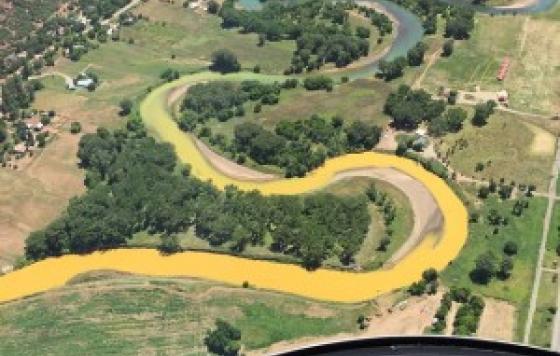The Clean Water Act turns 42 on tomorrow (10/18). To celebrate we'll be sharing reflections on the Act, talking about the fight to protect clean water, and discussing what we can all do to put drinking water first.
By Lynn Thorp, National Campaigns Director - Follow Lynn on Twitter (@LTWCA)
The Clean Water Act became law 42 years ago this week. It’s got a straightforward name and ambitious goals (zero pollution into our nation’s waterways.) Getting there is not so simple. I have two birthday wishes for this law.
First, we have to close loopholes that leave some water unprotected even though science tells us it should be. Right this minute, a huge policy battle is being waged over whether streams, wetlands and other bodies of water should be covered by the Act’s programs. I used to think streams and wetlands were landscape features. Now I know that they are actually part of our water infrastructure. What I mean by that is that they perform a function that we often think has to be performed by engineering and building things. Streams and wetlands filter pollution before it makes its way downstream to rivers and lakes, including rivers and lakes where we get our drinking water. This protects public health and wildlife. Wetlands and streams also prevent flooding, which can cause economic disruption and displace people from their homes. My first birthday wish for the Clean Water Act is that we stop arguing over the obvious and support the U.S. Environmental Protection Agency and U.S. Army Corps of Engineers proposal to close this loophole.
Second, we have to put the Clean Water Act to work to prevent more pollution. Often the Clean Water Act’s programs are weakened by special interest influence. As if that were not bad enough, the way government agencies work often means that our water laws don’t help each other enough. There are too many examples of Clean Water Act programs not working hard enough to protect drinking water sources, making the Safe Drinking Water Act’s job even harder. A good example is the pending proposal to set limits on water pollution from power plants. Power plants, most coal plants, are the largest direct discharger of toxic water pollution into our nation’s rivers, lakes and streams. And yet, EPA’s 2013 proposal to limit this pollution does not go far enough to limit contaminants like arsenic which we know are a problem in drinking water. Nor did the proposal quantify the public health risks and drinking water treatment costs avoided if this toxic water pollution is prevented at the source. My second birthday wish for the Clean Water Act is that we put it to work to Put Drinking Water First.
Here’s to many more, Clean Water Act. Let’s blow out these candles and get to work.
Related Posts
Stay Informed
Get the latest updates and actions:
Thanks for signing up!
There was a problem processing your signup. Please try again.


